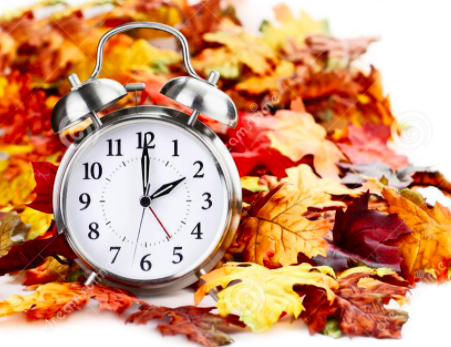cbd, health, sleep, Uncategorized
Spring Forward or Fall Back? How to Adjust to Daylight Savings Time and Sleep Better
Spring Forward or Fall Back; When you think about daylight savings time, do you immediately think about getting more sleep or less? For some people, the time change is no big deal. But for a lot of people, daylight savings time means daytime sleepiness, sluggishness, and exhaustion.
Thankfully though, all this can be avoided with a few easy changes to your routine in the week leading up to the time change. Before we get into how to adjust to daylight savings time, let’s take a brief look at its history, and why you may feel so tired after the change.
Why Do We Have Daylight Savings Time?
Daylight savings time, also known as daylight saving time (DST) was first used in Thunder Bay, Canada in 1908. It was intended to make as much use of daytime as possible and save energy. However, it was actually first invented in New Zealand in 1895. The United States is only one of about 70 countries to use DST— however, parts of Arizona and all of Hawaii do not observe it. Daylight saving time in the US begins at 2:00 AM local time on the second Sunday in March, when you “spring forward,” or set your clock forward one hour. It ends on the first Sunday of November when you set your clocks back an hour, or “fall back.” The United States first observed DST in 1918, where it was called “Fast Time,” but it was repealed less than a year later. It was reintroduced by President Franklin D. Roosevelt during World War II, calling it “War Time.” Until 1966, there were no set rules for daylight saving time, leading to a lot of confusion up until the passing of the Uniform Time Act of 1966. This gave areas that wanted to opt out of DST the opportunity to do so while also establishing a synchronized DST schedule across the whole country to keep things in sync after each time change.The Difference Between Daylight Savings Time and Standard Time
The main difference between daylight savings time and standard time is that standard time is determined by science, while daylight savings time is determined by people. Time in any location is influenced by the earth’s position in relation to the sun, which is what creates the different time zones across the world. The earth rotates on its axis about 15 degrees per 60 minutes, and each 15-degree section becomes a time zone. Standard time is the local time of any region based on what time zone it exists in. For example, the standard time in Los Angeles is different than the standard time in Miami, or the standard time in Sydney because they’re all located in different time zones. So while the sun is rising in Los Angeles, people in Sydney may be getting ready for bed! Daylight savings time affects a location’s standard time by modifying it by one hour at the designated time each year— either an hour forward in spring or an hour backward in fall. When daylight savings time begins, it “adds” an hour to a location’s standard time. When it ends, you “lose” that hour as you return to your normal standard time. Remember what I talked about above— daylight savings time was a concept created by people to make the most out of their time. So while it affects how we set our clocks, it doesn’t actually alter time itself.Why Do You Feel Tired After Daylight Savings Time?
Daylight savings time may be intended to save energy, but it can have the opposite effect on your own body! This is because your circadian rhythm may fall out of alignment after the clock change. Your circadian rhythm helps regulate your sleep cycle, and because it’s influenced by light exposure, the combination of the time change and changed light outside can cause circadian misalignment.Who is Affected Most by the Time Change?
Not everyone is affected by daylight savings time the same way. Some people may only feel groggy for a while. For others though, that sleep loss may put them at increased risk of heart attack or stroke, workplace injuries, or even fatal traffic accidents. But people of a certain chronotype may actually be more affected by the time change. A study from 2008 found that people who are most productive during the evenings— also known as night owls— have significantly more restless sleep following the time change. Do you know if you are a night owl or a morning lark? Ask yourself the following questions:- Do you feel most alert in the early morning, or later in the evening?
- Do you feel the sleepiest in the early evening or past midnight?
- Do you enjoy waking up at 6 AM or earlier, or at 8 AM or later?
- Do you have the most energy a few hours after waking up or a few hours before bed?
How to Get Great Sleep as Daylight Savings Time Begins or Ends
Whether you are preparing to lose an hour as you transition into daylight savings time or gain one as you return to standard time, the time shift can be disorienting and rough on your sleep. To avoid any post-daylight savings time sleep problems, all you need to do is make some easy changes to your sleep hygiene and bedtime routine. These can help you sleep better whether you’re waking up to sunshine, or to darkness. These tips aren’t just for adults— teens and kids of all ages will benefit too! Just be sure to incorporate these suggestions into your child’s bedtime routine as you would your own.1. Follow a Consistent Sleep Schedule— Preferably According to Your Chronotype
Your chronotype is your body’s natural inclination to be awake or asleep at certain times of day. Your chronotype is one of the biggest determining factors not only for your sleep schedule, but for your ideal windows of productivity. To find your chronotype and start finding your unique schedule, check out my chronoquiz. However, if you already know your chronotype but can’t follow that schedule due to work, social commitments, or other conflicts, it’s vital to still follow a consistent sleep schedule. Go to bed at the same time each night, and wake up at the same time each morning, even on weekends or days without strict scheduling. Remember: The more consistent your sleep schedule is, the easier it is to fall asleep and to wake up!2. Eliminate Blue Light at Night
Blue light exposure is important for maintaining your circadian rhythm. However, too much blue light exposure at night can delay melatonin production and keep you awake. You want your melatonin production to start early because if it is still running when you wake up in the dark, it makes it far more difficult to wake up. This will allow you to fall asleep more quickly, which will also allow you to wake up more easily. The best way to eliminate blue light at night is to stop using all your electronic devices 60 to 90 minutes before bed. This includes your phone, your computer, and even your TV. Alternatively, you can use blue light blocking glasses to help your brain produce the melatonin you need to sleep, even while you use your devices. Just make sure they have amber lenses— that’s key to getting the most protection from your glasses.3. Bring on the Morning Light!
As I said above, blue light exposure at night can make it harder to get the restful sleep you need each night. Well, it is the opposite in the mornings. Blue light in the morning turns off the melatonin faucet, making it easier to wake up. The best way to get this is with morning light outside, but using a lightbox or GoodDay bulbs will certainly help, especially if it’s dark in the mornings. Ideally, you want 20 minutes of light exposure from one of the earlier mentioned bright light sources, whether it is the morning sun, a lightbox, or a specialty bulb. It does not have to be direct exposure though— you can do this while you are brushing your teeth, eating breakfast, or doing other morning activities. Obviously, you do not want to do this near your bed partner if they don’t get up at the same time you do, so keep their sleep in mind when you add blue light to your morning routine.4. Listen to Some Music
Music can evoke many emotions, so why not play something that helps wake you up in the morning? Is there a song that brings back some nostalgic memories for you? Do you have a workout playlist? Using music that moves you can definitely help you wake up in the morning, give it a try. If you enjoy listening to music around bedtime though, you may want to be careful what you choose. A recent study from Baylor University found that listening to catchy music before bed can make you much more likely to experience poor sleep. Participants who had a catchy song in their heads around bedtime had more trouble falling asleep, woke up more during the night, and spent more time in light sleep stages instead of more restful deep sleep. So if you listen to music before bed, try sticking with more steady, melodic, or calming music to help your sleep quality.5. Take a Cool— Not Cold— Shower In the Morning
It turns out that temperature can also be used when trying to gain a level of alertness, and cold works well. And while a cool shower may not sound ideal first thing in the morning, it can wake you right up. The cool water improves your circulation, which also boosts your alertness— both of which are helpful for morning wake-ups! Go ahead and take your morning shower as normal, and for the last minute, slowly turn the handle to make the water gradually cooler. You want to make it mildly uncomfortable, but not unbearable. You can also try a contrast shower by starting with cool water, switching to your normal shower temperature, and finishing with cool water. There is some evidence that finishing on a shower cold enough to make you shiver slightly has some beneficial fat-burning effects. I’ll be the first to admit it’s not for everyone, but it may warrant some consideration if you are trying to lose some stubborn body fat!6. Eat The Right Breakfast
Breakfast is often considered the most important meal of the day. And it’s true! What you have for breakfast can make or break how well you wake up each morning. Here are some guidelines you can follow to make sure your breakfast can help you wake up and be ready to take on the day.- Avoid carbs in the morning, because they can make you sleepy. If you eat a muffin or a bagel, you might as well be taking a sleeping pill after you wake up. Instead, look for a light high protein, high-fat breakfast for your morning energy.
- If you’re a coffee drinker, wait until 90 minutes after you wake up to enjoy your first cup. The timing is important since you want the caffeine to give you that boost of energy right as your cortisol lowers in order to get it back up again. Cortisol is one of the most alerting hormones in the body, and is a vital part of waking you up in the morning. Sleep is a dehydrating event, so instead of drinking coffee first thing, go for at least 15 ounces of water to replenish yourself.


